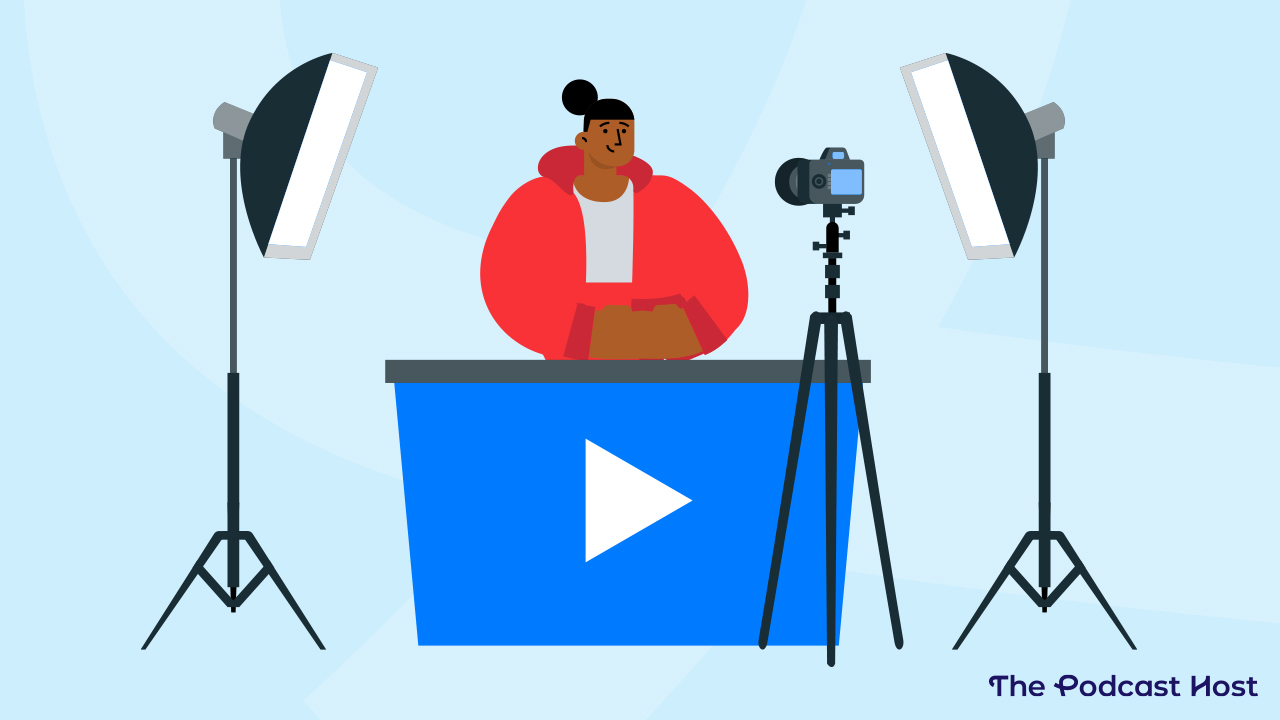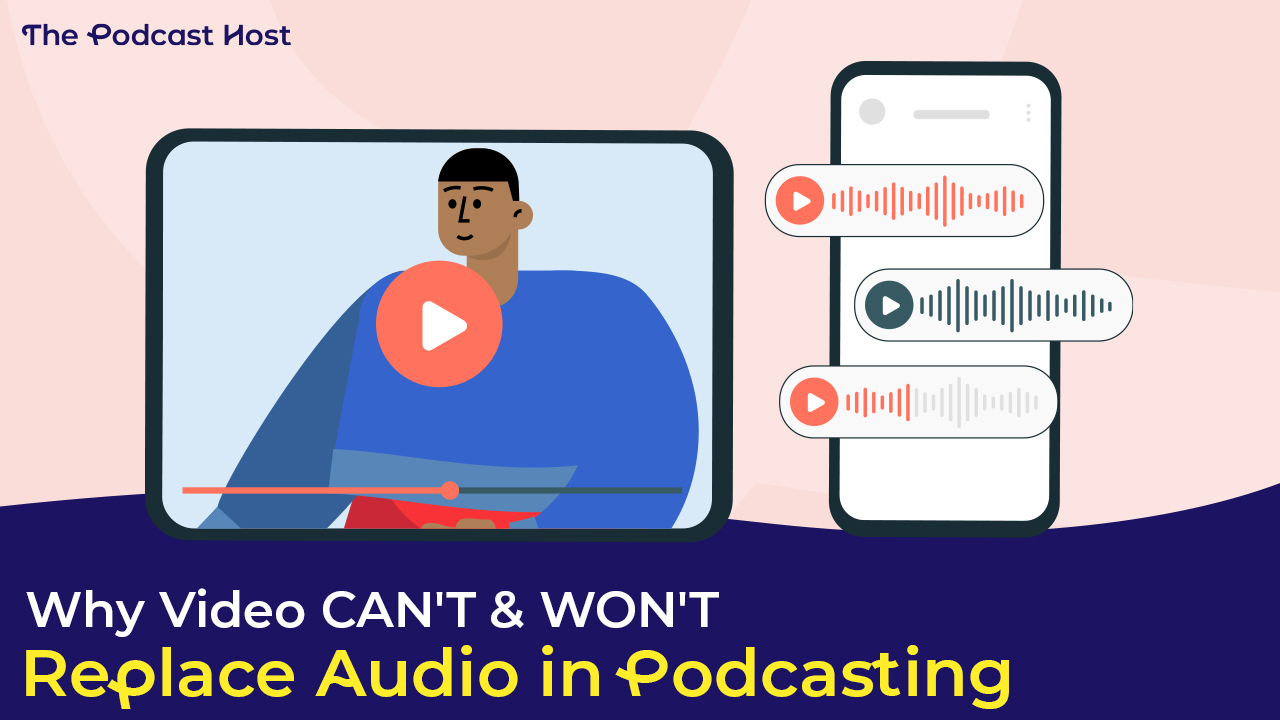The definition of ‘what is a podcast?’ has become blurry in recent years. On the one side, you’ve got a Youtuber uploading a video saying, “Hey, welcome to my podcast”, whilst on the other side, you’ve got the veteran purist telling you if you don’t have an RSS feed, you don’t have a podcast.

Editor’s Note
Our video podcast guide was initially written in 2018. We update this post periodically to reflect changes in technology, our recommendations, and because we’re always learning new things.
This post contains the odd affiliate link to products we think you might find interesting or useful. We’d earn a small commission should you choose to buy through them, though never at any extra cost to yourself!
So does it really matter how different people define podcasts? Not always. But I suppose it can. For example, if someone hears you have a podcast, yet they can’t find it on their listening app of choice, that will cause a bit of confusion and frustration, which will, in turn, hamper your growth.
But we’ve already contributed to the ins and outs of the “what is a podcast?” discussion, with Colin’s “explanation in plain English”. This time around, I’d like to talk specifically about video podcasts. What exactly is a video podcast, and should you make one? And are they essentially just videos on YouTube?

Can Video Content on YouTube Be a Podcast?
For years, you’ve been able to find loads of videos of podcasts on YouTube – most famously, Joe Rogan. These are video recordings of podcast episodes rather than the podcast episodes themselves.
But in 2022, YouTube made some official moves to “get into podcasting”. Being one of the world’s biggest content platforms and search engines, this was good news for the medium.
At the time of writing, though, YouTube’s podcast offerings are still limited, both in regional availability and in features. Some creators and viewers may be able to access dedicated “podcast” pages. But these are little more than re-skinned YouTube channels.
The next move for YouTube looks to be RSS feed ingestion. Though this might sound like a serious medical complaint, it basically means that YouTube will use your show’s RSS feed to add podcasts, their details, and their episodes. The issue with this (as opposed to fully supporting RSS) is that any edits you make to published episodes, episode titles, or shownotes won’t show up in the YouTube version of your podcast. You’d need to log into YouTube and replicate the changes there.
Sure, it’ll still be a step forward, but many would argue a slightly misplaced one. They’re taking a process that should be simple and making it more difficult.
Of course, there’s no need to burden listeners or viewers with these technical distinctions. Saying “find the podcast on YouTube” is absolutely fine, so long as you’ve made it available everywhere else, too. You’ll never reach a wider audience if you don’t make your content available on their podcasting platform of choice.
So, even if you have access to the early iteration of podcasts on YouTube, treat this as a companion to your show. Your central hub should always be your podcast hosting account.

So, Is There Such a Thing as a Video Podcast?
Podcasts are overwhelmingly done in audio, and are subscribed to or ‘followed’ in places like Apple Podcasts, Spotify, Google Podcasts, and Overcast. There’s a tiny percentage of actual video podcasts out there, too. The most popular places they can be found are Apple/iTunes and Spotify, but some other directories can support them. An example of one on Apple is Ted Talks Daily, which is a video companion to the audio-only version of the show.
Spotify is still relatively new to the video podcast party, though they announced plans to support them back in mid-2020. You can now make an exclusive video podcast on the platform if you’re using Spotify for Podcasters to host and publish your content.
Spotify’s involvement will undoubtedly further the growth of video podcasts (as an aside, check out some of the best video podcasts on Spotify). But until now, they’ve been relatively obscure things, dwarfed by their audio-only counterparts.
So, as video podcasting becomes much more common, should you jump into the pool with your own content?
Do My Audio Podcast Audience Want Video Content?
Nearly a third of the podcast audience surveyed here prefers to “actively watch” a podcast with a video component.
Consumers were asked their preference for three podcast experiences:
- Audio only without any video (43% preference)
- Play video in the background or minimize on device while listening (29%)
- Actively watch while listening (28%)
This data suggests that there’s undoubtedly a demand for video podcasts. Whether or not your existing audience wants a video element might not be the primary reason for deciding to go down this route, though. Instead, new visibility and extra discoverability could be seen as the primary benefit. If some existing listeners want to transition to watching your content, then treat that as an added bonus.
Where Do People Watch Podcasts?
In the same Cumulus Media/Signal Hill Insights data, mentioned above, there are some other interesting stats.
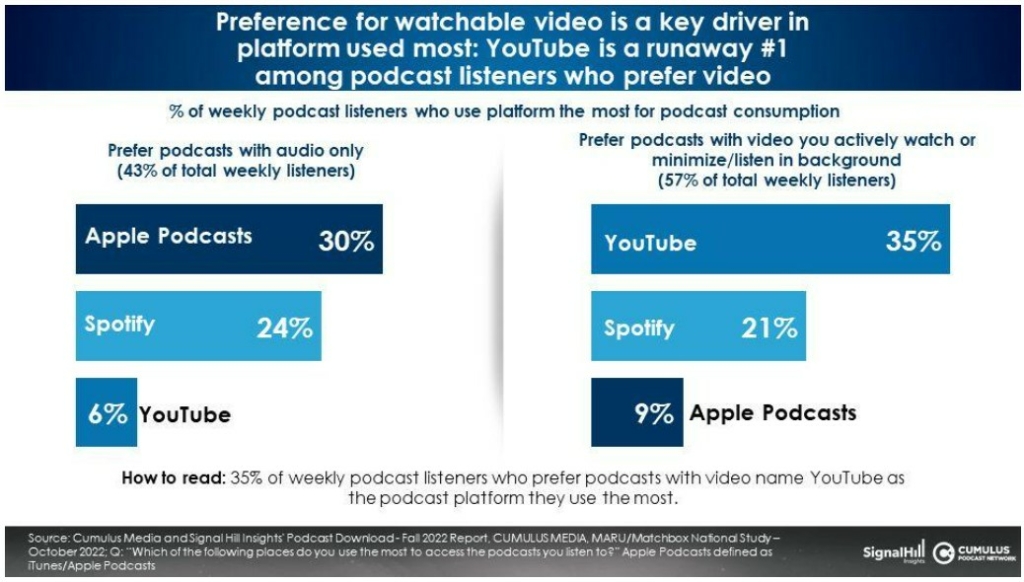
35% of weekly podcast listeners who prefer podcasts with video name YouTube as the podcast platform they use the most.
This is with Spotify in second place (21%) and Apple Podcasts third on 9%. Compare this to audio-only podcasts data and you have Apple top on 30%, Spotify second with 24%, and YouTube third with 6%.
So if you’re going to create any sort of visual element around your podcast, then uploading to YouTube is a no-brainer.
You might choose to go above and beyond just uploading the entire episode, too. From a new visibility point of view, capturing someone’s attention with video content on YouTube for more than a few minutes is rare. Instead, you can use select clips that focus on one particular question or topic, and upload them as ‘micro-content’. This technique is explained in detail in Gavin Bell’s guide to running ads on Facebook.
This way, your podcast is on YouTube (comfortably the biggest video platform on the web), and the fact that it isn’t technically a podcast? Well, nobody really cares. As long as your audience can still get the audio version anywhere podcasts are consumed, then you’re golden.
A lot of the debate around video podcasts (as well as content in general) is centred on what medium is “best”. But podcasting (audio), YouTube (video), and blogging (shownotes) can all complement each other in a sustainable and effective manner. Check out our series on Content Stacking for a full guide on how to get the best from this approach.
Video Podcast Hosting Providers
As we’ve covered already, uploading content to YouTube stands apart from all other podcasting apps, listening platforms, and directories. Think of that as an additional walled garden.
If you want your video podcast to appear in Apple Podcasts, then Podbean and Castos are two great hosting services that enable this. I’ve linked to our full reviews of both so you can find out a bit more about them.
And, to create a Spotify-only video podcast on the platform, you’ll need to upload to Spotify for Podcasters (formerly Anchor).
If your show already exists on an existing hosting provider, we don’t recommend fully moving it over to Spotify for Podcasters as it isn’t the most robust or stable platform out there. You might, instead, just create a separate video podcast version of your show there.
Just be sure to give the show a slightly different name, should you choose to go down this route. For example, Podcraft: The Video Series. This means you won’t have two almost identical copies of your podcast on Spotify.
The video component of your show would only be available on Spotify. Anywhere else that ends up listing the feed (likely, Google Podcasts) would only play the video’s audio. Because you wouldn’t be submitting this to Apple Podcasts, though, it won’t appear in a lot of other popular listening apps.
A counter-argument to this is that having both a video and audio version of your podcast can split your downloads (as in Apple Podcasts) and could complicate CPM for any podcast sponsorship you plan to run. However, the audio version will almost always be much higher, and you can easily clarify this in your media kit if it’s an issue.
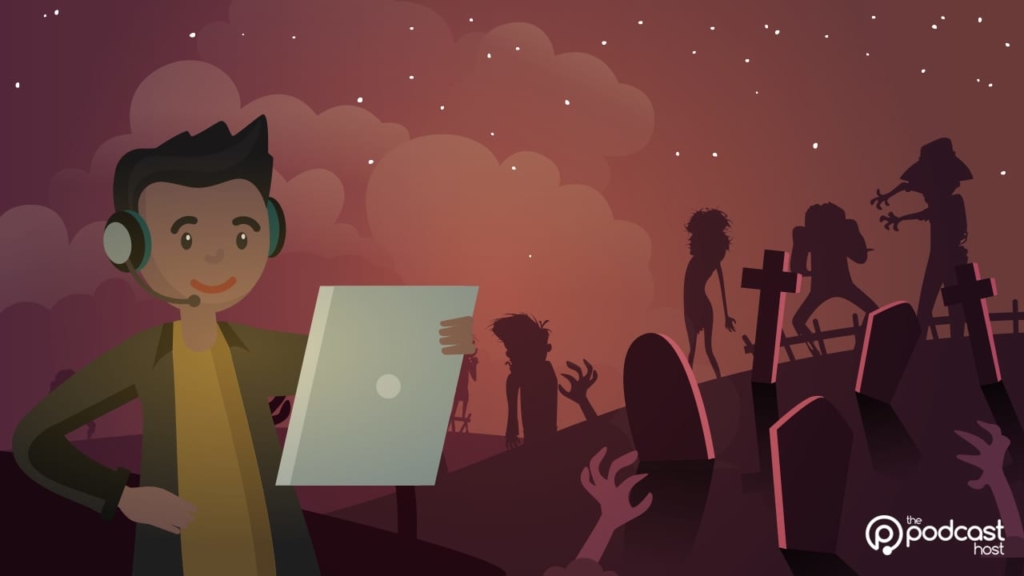
How to Record Video & Audio Footage of Your Podcast Episodes
Whether you’re doing a traditional video podcast, or recording videos alongside your podcast, there is no shortage of tools to capture it all.
SquadCast, Riverside.fm, Iris, and VEED are four popular platforms for video podcasters. Veed, in particular, has some great video editing tools as well as a free tool to convert videos to audio. We dive into these video podcasting and remote recording tools in more detail in our How to Put a Podcast on YouTube article, too.
Best Platform to Export Audio as Podcast Videos?
Of course, your video doesn’t always need to be “video” in the conventional sense. There are many different types of video podcasts. Some podcasters upload videos that are static images (usually the show’s cover art) with the audio recording playing alongside it. This means you can get your show onto platforms like YouTube without much additional effort.
You can easily export video in this way if you’re using Alitu to record and edit your podcast, or, if you host with Libsyn or RedCircle.
Alternatively, you can go that extra wee step and create Audiograms for your podcast. These are similar to static images but can include dynamic waveforms and closed captions. Audiograms work better for pulling short shareable clips from an episode, as opposed to being fully-fledged episodes in their own right.
Does Your Video Clip Thumbnail Matter?
We all know that old adage, “Don’t judge a book by its cover,” right? Well, as far as I’m concerned, it must have been coined by an author who didn’t have any illustrator pals. Now, more than ever, people judge everything by its cover, and if you think video is any different, you’re living in a fantasy world.
Crafting a great custom thumbnail for your video is essential for hooking a big portion of your views. The thumbnail is what makes viewers want to watch your video, and you should spend a good deal of time coming up with something creative. If you don’t upload your own thumbnail, YouTube will automatically choose one for you, and this is no good. It won’t do anything to capture your audience. Do a bit of research on what your competitors are up to and get creative. You’ll improve over time and come to know what performs and what doesn’t.
Looking for a free tool to make great custom thumbnails for your video podcasts? Check out Canva, where you’ll find loads of different designs and templates!
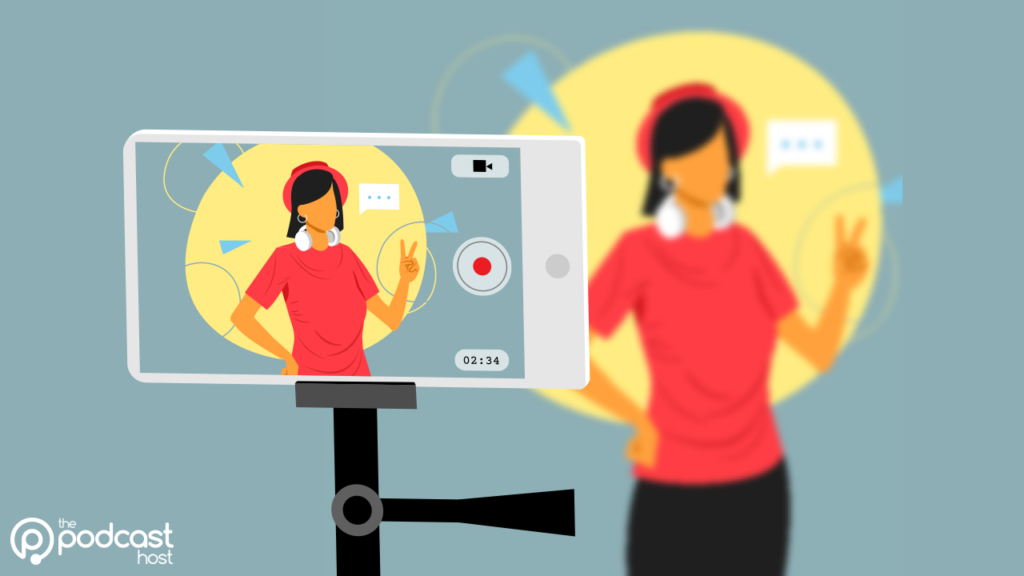
Video Podcast Equipment List
So, if you’re looking to make a video podcast where you record yourself and your surroundings, what fancy equipment can you use to take things to the next level?
Video Podcast Equipment Checklist
Our checklist includes affiliate links. We may earn a small commission should you choose to buy through them (never at any extra cost to you!).
A High Definition Camera, or, Multiple Cameras
With the quality of video on iPhones and Androids now, getting multiple cameras together to record should be easy. Many podcasts use a multi-camera approach to their video podcasts. It’s not necessary to use multiple cameras; however, it can make your videos look much more dynamic.
One option here to consider is the Logitech C920x HD Pro Webcam. It’ll give you HD 1080p recording, has built-in lighting adjustment, and costs around $60.
Tripod
You’ll need to be hands-free when recording your podcast, especially if you’re handling the recording process yourself. Most videographers would recommend using a tripod to capture your video podcast effectively.
Pro Tip! Be sure to “spike” (put tape on the floor) your tripod position, which means you can replicate the positioning for future episodes. This helps improve the continuity of your videos.
This portable 40″ alloy phone tripod also works as a selfie stick. It’s collapsable for transport and comes with a remote Bluetooth shutter. You can usually pick one up brand new for around $23.
Lighting
The key here is to eliminate shadows on your face and make you or your guests look the best they can. You can do this with lights from the home. You’ll need at least two lights, preferably three. A soft light source for faces is best, a second light for the background to create depth, and a third source to fill the space. The third light can also accent hair, or create a ‘hot or cold’ sidelight for the face. Achieve nice lighting, and your audience will keep coming back, time and time again.
This 10″ LED ring light provides face lighting and encircles the camera to add dramatic ‘eyelight’. It has three light temperature settings to align with other lights in the room, as well as a built-in adjustable smartphone Tripod. You can usually buy one for less than $20.
External Microphone
Good audio quality for podcasting is essential in order to record the clearest and cleanest sound. The use of an external microphone should be a focus for any video podcaster, too. Additionally, using external microphones doesn’t increase the complexity of video podcasting and is undoubtedly worth every bit of extra effort.
A popular mic amongst video podcasters is the Rode Wireless Go. This gives you a lot of freedom of movement in front of the camera, and – being a Rode mic – offers a great level of audio quality, too.
Also, be sure to check out the Shure MV88+ video kit when organising your special equipment shopping list.
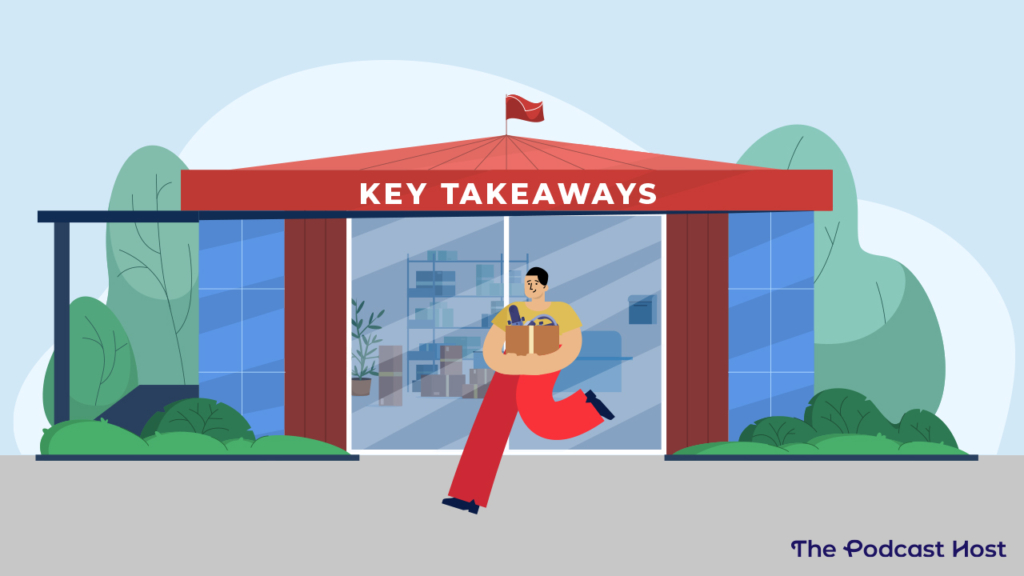
Video Podcasts: Summary & Next Steps
So, in summary, the most popular routes for making a video podcast are;
- Create a full video version of your show, using Podbean or Castos, and make it available in Apple/iTunes alongside the audio podcast. Upload to YouTube as an additional step.
- Create a Spotify-only video podcast by hosting on Spotify for Podcasters. Upload to YouTube as an additional step.
- Upload ‘static image’ versions of your podcast episodes directly to YouTube by hosting on Alitu or RedCircle.
- Film your recording sessions. Create highly shareable and searchable ‘micro-content’ using short clips. You can optimise both video and static images for different social media platforms, too. Post them on YouTube, Instagram, and or Facebook. Make this part of a ‘content stacking‘ approach.
Like almost anything else in podcasting, there’s no “right” approach here. Only what fits best for your unique ambitions, workflow, time available, and budget. It’ll certainly be interesting to keep an eye on further roll-outs of podcasts on YouTube, and see what happens there, but at this stage, it’s early days.
On a final note, we’ve mentioned Alitu as an option for exporting ‘static image’ video versions of your podcast episodes. Did you know that Alitu is one single ‘podcast maker’ tool to get podcast recording, editing, production, transcription, and hosting all under one subscription? Try it out, free for a week, and take a look for yourself!
